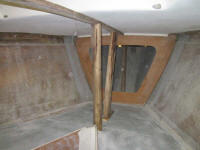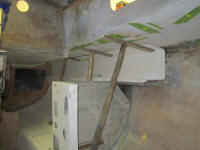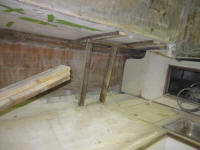
110 Cookson Lane | Whitefield, ME 04353 | 207-232-7600 | tim@lackeysailing.com
I got started in the cabin, where I built some simple wooden supports beneath the two after portions of the sidedeck and the foredeck. These would hold the decks in place during core installation.
Back on deck, I prepared the port aft sidedeck for recoring, sanding away the deck paint in the adjacent areas, including the remainder of the cabin trunk side, as well as lightly sanding any of the areas that I'd patched and repaired last time. At the same time, preparing ahead for work on the hull-deck joint, I removed the paint and gelcoat from a band of the deck at the gunwale, which would later accept new fiberglass tabbing wrapping over the joint.
Because I wanted to keep the recoring process moving, as well as divide the job into portions that I could easily handle a day at a time, I focused only on paint removal adjacent to the area I wanted to install new core in on this day, continuing my piecemeal approach to the deck sanding and repair that, despite being different from my usual methodology, was working well in this case.
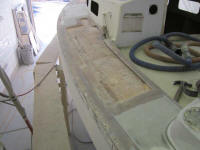
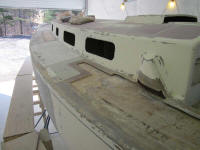
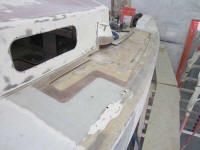
Once I'd prepared the port after sidedeck as needed, I cleaned up from Friday's new core on the forward port side, lightly sanding the area to remove excess resin that had squeezed up during the installation and weighting.
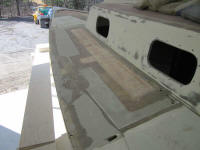
Next, I cut and fit new core for the port sidedeck, beginning with small pieces to extend beneath the overhanging deck edges as needed and then filling in the remaining field. I laid out the small pieces upside down by accident, leaving the scrim on the top surface, though I corrected myself by the time I got to the larger center pieces.

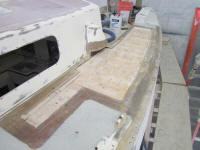
The scrim on one side of the flexible core sheets is there only to hold the individual core blocks together, while allowing the core to bend into the contours of the surface to which it is being applied. Normally, the scrim side faces the convex portion of the curve--on decks, this means the "bottom"--to allow the core to conform properly. Otherwise, it makes no difference which side faces where. Since these small pieces of core lid over the generally flat surface of the sidedeck edges were conforming fine as is, I didn't recut them with the scrim side down.
With the core cut and prepared, I made final cleanup and other preparations, then installed the core in epoxy adhesive, working as quickly as possible to get all the core in place, covered, and weighted down in a timely fashion.
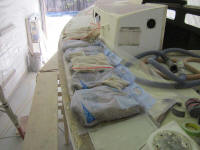
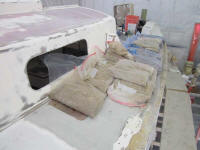
Afterwards, I cut two layers of fiberglass to fit the port forward sidedeck and installed the new material in epoxy resin.
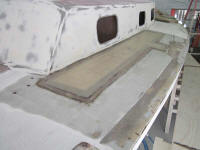
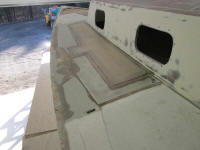
Total Time on This Job Today: 7 hours
